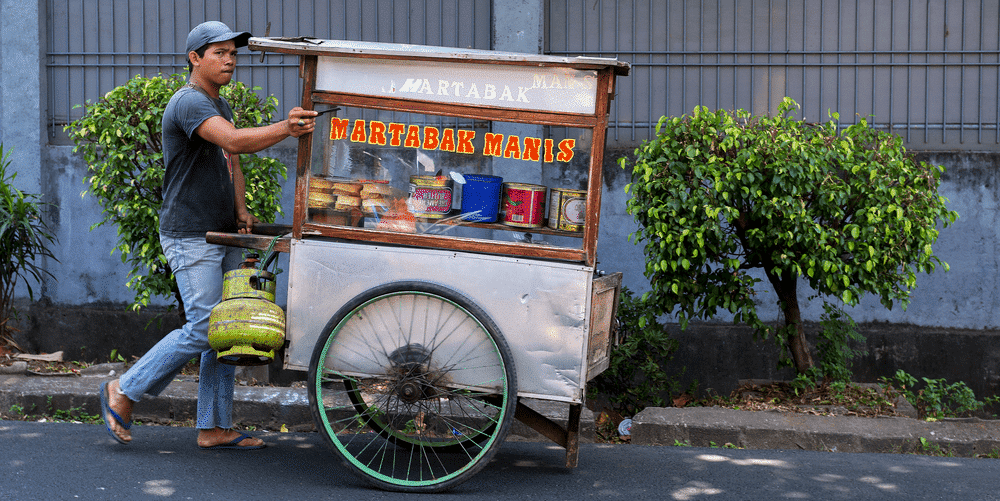The cost refers to the amount spent on a purchase, while the original cost (or cost price) refers to either the cost incurred for the goods sold (cost of sales) or the cost incurred to produce a product (manufacturing cost). In contrast, incurred cost refers to the total expenses invested in making a product, including costs that don’t fully become part of the original cost. Items that are larger than raw materials but less than a finished product are considered work-in-progress (WIP).
The Difference Between Cost and Original Cost
Today, at the Food Hall in the nearby Summarecon Mall, I bought a pack of eggs (10 pieces) for Rp.26,000 and a box of Indomie (40 pieces) for Rp.100,000. So, the total amount I paid for today’s shopping was Rp.126,000. For example, if I opened a stall selling egg Indomie for my neighbors and sold one serving right after opening, the original cost would be Indomie Rp.2,500 + egg Rp.2,600 = Rp.5,100.
In other words, the "original" in original cost has the same meaning as "base," so the original cost is the base amount of Rp.5,100 for one serving of egg Indomie sold. This is separate from the purchase amount of Rp.126,000, yet both are referred to as costs (purchase cost and input cost), which can easily lead to confusion.
- Purchase Expense: The cost paid at the Food Hall
- Input Expense: The cost of the Indomie and egg used to cook in the pot
- Original Cost: The base cost relative to sales or production (cooking)
If the "base" is a manufactured (cooked) product (one serving of egg Indomie), it’s called the manufacturing cost. If it’s a product recorded as sold (since what’s cooked always becomes sales, also one serving of egg Indomie), it’s called the cost of sales. However, for the second customer who just walked in, the Indomie (1 packet) and egg (1 piece) being prepared for their second serving are in a state of "larger than raw materials but less than a finished product." There’s no base object to call it an original cost for yet, but if we had to categorize it, it would be the original cost of work-in-progress.
Once the stall gets busy, it becomes hard to track how many Indomie packets and eggs were used in a day. Normally, you’d calculate the input cost by adding the cost of yesterday’s leftover Indomie and eggs (from the morning) to today’s purchase cost, then subtracting the cost of what’s left after closing.
- + Morning leftover amount: Rp.0
- + Today’s purchase cost: Rp.126,000
- − Closing leftover amount: Rp.115,800
- ---------------------------
- Input Cost (Incurred Cost): Rp.10,200
In the case of a stall, once cooking starts, there’s no such thing as carrying over half-cooked items to the next day. The costs invested in cooking always become a product and thus a cost against sales. Therefore, "incurred cost = manufacturing cost = cost of sales," meaning concepts like incurred cost or manufacturing cost aren’t even necessary. The cost of sales is finalized once the remaining Indomie and egg amounts are determined after closing.
The Difficulty of the Work-in-Progress Concept: Larger Than Materials, Less Than a Product
Materials refer to the Indomie and eggs bought from the Food Hall and still stored on the shelf. A product is the egg Indomie fully cooked according to a set recipe. Anything in between—"larger than materials but less than a product"—is collectively called work-in-progress. So, the noodles waiting to be softened in the pot are work-in-progress, and the state after adding the egg and waiting for it to set is also work-in-progress.
When calculating the amounts at closing—materials (Indomie and eggs), work-in-progress (what’s in the pot being cooked), and products (egg Indomie)—the work-in-progress amount is naturally 0. However, the input cost (incurred cost) includes 2 packets of Indomie and 2 eggs, which directly becomes the cost of sales.
I often get confused myself, but incurred cost refers to the total expenses invested in making a product, including the portion that didn’t fully become part of the original cost, categorized as direct material costs. From this, only the portion that becomes a finished product is included in the manufacturing cost, while anything that happens to not be a finished product at a given moment is called work-in-progress.
So far, I’ve tried to explain the difference between cost and original cost, the meaning of work-in-progress, and the difference between incurred cost and work-in-progress using egg Indomie as an example. However, original cost also includes utilities and labor costs beyond materials. Since I cook it myself, there’s no labor cost, but utility costs are finalized when the bill arrives at the beginning of the next month. Dividing that by the number of operating days gives the daily utility cost.
If the "base" is the cost for a one-month period, it’s sometimes called a period cost, meaning it’s confirmed as an original cost the moment it’s incurred as an expense.



